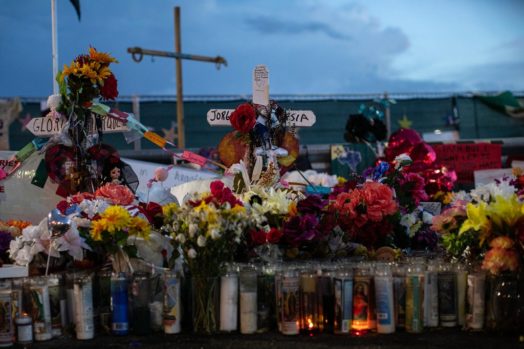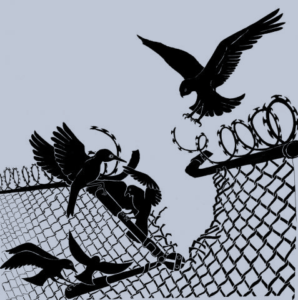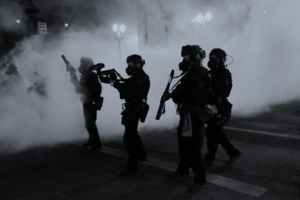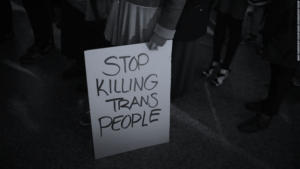- Los Angeles, CA
- Subscribe to our newsletter
Unit 6: Anti-Mexican and Anti-Latinx Violence in the U.S.

How has anti-Mexican violence and, more broadly, anti-Latinx violence shaped the landscape and national imaginary of the United States? How do immigration detention centers contribute to the carceral regime of the U.S.? How is state violence linked intimately to gendered violence?
This shift to interpreting immigrants as terrorists and criminals, and therefore incarceratable humans, brought immigration firmly into the grasp of the carceral state. The emergence and consolidation of the US carceral state has been such an important political dynamic in recent decades that political scientists have argued it “rivals in significance the expansion and contraction of the welfare state in the postwar period” (Gottshalk, 2008: 236) and constitutes a “durable shift in governing authority,” (Orren and Skowronek, 2004: 123, cited in Gottshalk), in which the state began to exercise vast new controls over millions of people. These measures and the interpretation the accompanied them did much the same work that the 2008 Penal Reform in Mexico did in fortifying the carceral state.
Shannon Speed (Chickasaw)
Readings:
- Monica Muñoz Martinez, “Recuperating Histories of Violence in the Americas: Vernacular History-Making on the US–Mexico Border.” American Quarterly 66. 3 (2014): 661-689.
- Shannon Speed, “States of Violence: Indigenous Women Migrants in the Era of Neoliberal Multicriminalism.” Critique of Anthropology 36.3 (2016).
- Lorena Fuentes, “The Garbage of Society: Disposable Women and the Socio-Spatial Scripts of Feminicide in Guatemala.” Antipode (2020): 1–21.
- Edward J. Escobar, “The Unintended Consequences of the Carceral State: Chicana/o Political Mobilization in Post–World War II America.” Journal of American History 102.1 (2015): 174–184.
For additional reading, please see:
- Joseph Orosco, “Lessons About Police Brutality From the Chicanx Experience”





